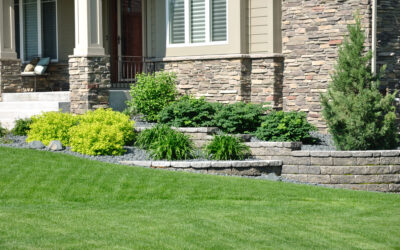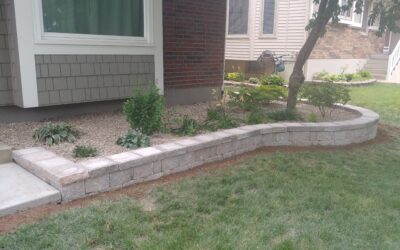Ever stood in awe of a neighbor’s fall garden, vibrant with colors as if defying the approaching winter chill? It can make you wonder: What’s the secret to such captivating autumn blooms?
Well, here it is. The answer lies in selecting the best flowers for fall planting.
Sure, there’s an art to it – understanding each flower’s growth habits and care needs or knowing when your spring bulbs need to hit the soil. But trust me; anyone can master this.
In our journey together through this post, we’ll explore gems like Autumn Crocus and Grape Hyacinth, unravel why certain bulbs are ideal for fall planting, and even dive into preparing your own piece of paradise for successful planting.
By the conclusion of our expedition, I guarantee that you’ll be all set to make your outdoor area into a show-stopper.
Best Flowers for Fall Planting
Fall is an ideal moment to plant blossoms that will bloom in the latter part of winter or early spring. The cooler air is easier on both plants and gardeners, while the soil still provides enough warmth for root growth.
Standout Fall-Blooming Flowers
Let’s talk about the star of fall gardens; Garden Mums or Chrysanthemums. These beauties give a profusion of daisy-like blooms during fall and thrive in cool weather, but need protection from early frost for a prolonged blooming season. When choosing mums for planting, you’ll want to make note of whether the mums are “hardy” or not. In our planting zone, only those marked “hardy” are considered perennials and will survive our Kansas City winters when planted in the ground. Mums that aren’t marked hardy will still bring beautiful fall color to your home, but won’t come back again next year.
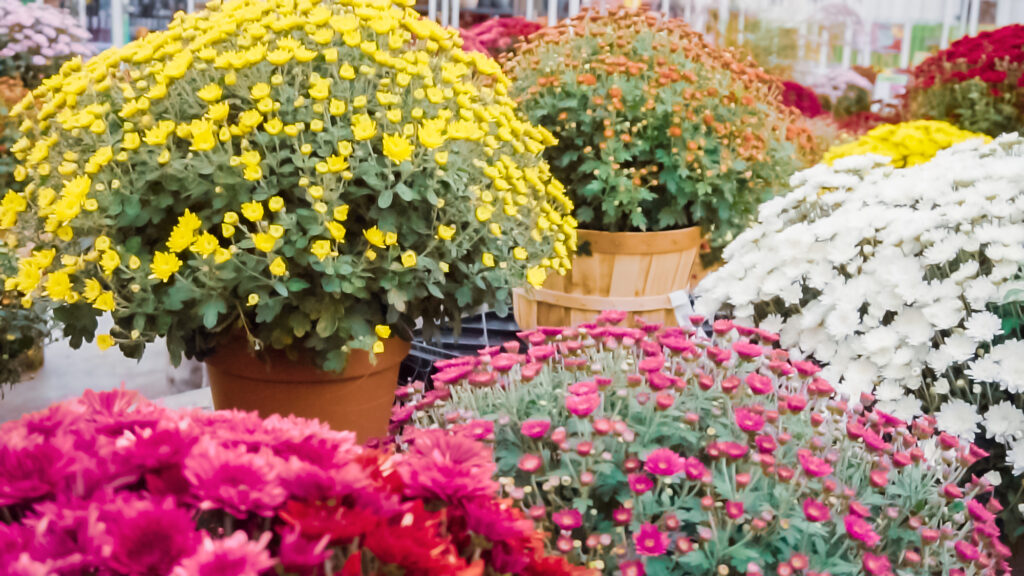
Variety of mums flowers in a garden center.
You might be thinking “Great. But where do I start?” No worries at all. We’ve got some helpful tips for you. First off, pay attention to their growing conditions – they prefer full sunlight and well-drained soil.
The next thing is planting them correctly. Make sure to place these beauties at least 18 inches apart as overcrowded plants tend not to bloom as much due to competition for resources.
Last but definitely not least is taking care of your new additions properly so they can flourish beautifully throughout the fall season. Keep an eye out on watering needs especially if rainfall isn’t sufficient; mulching around the base also helps maintain moisture levels while suppressing weed growth at the same time.
Exploring the Grape Hyacinth
If you’re looking to add some color to your garden beds next spring, consider planting Grape Hyacinths. Their clusters of bright blue flowers not only offer a visual treat but are also hardy enough to withstand varying growing zones.
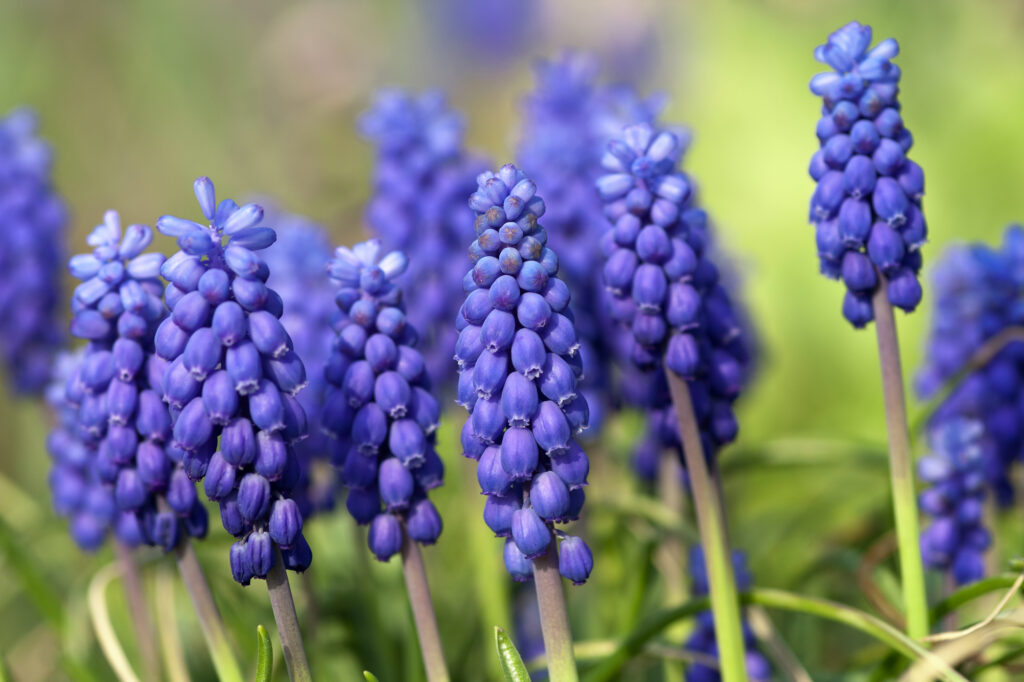
Detail of the grape hyacinth
Bulbs like tulips and hyacinths need their time under the cool earth before they can greet us with vibrant colors in spring. But it’s important not just what we plant—where we place these bulbs matters too. For best results, make sure each bulb has plenty of space around it (think two times its width).
Comparing Popular Fall Flowers
Fall is a beautiful season with a wide variety of flowers that can add vibrant colors and visual interest to your landscape. Here are some more of the most popular fall flowers you can consider for your garden:
Asters: Asters bloom in late summer and fall, offering daisy-like flowers in shades of purple, pink, and white.
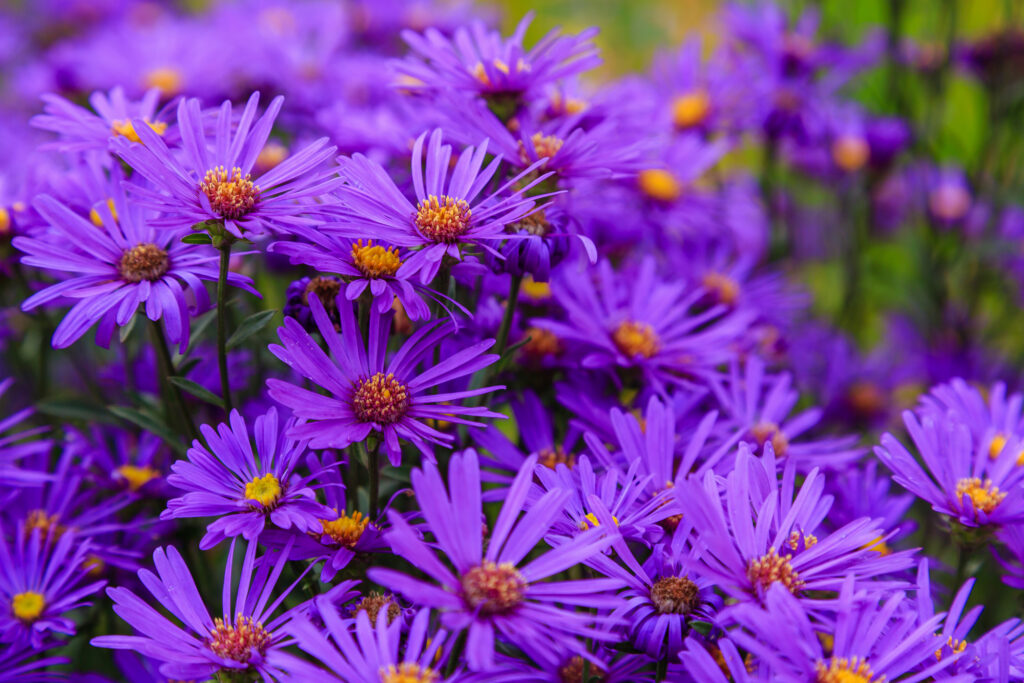
Close view of bright blooming asters
Pansies: These cold-tolerant annuals come in various colors and are perfect for adding a pop of color to your fall garden.
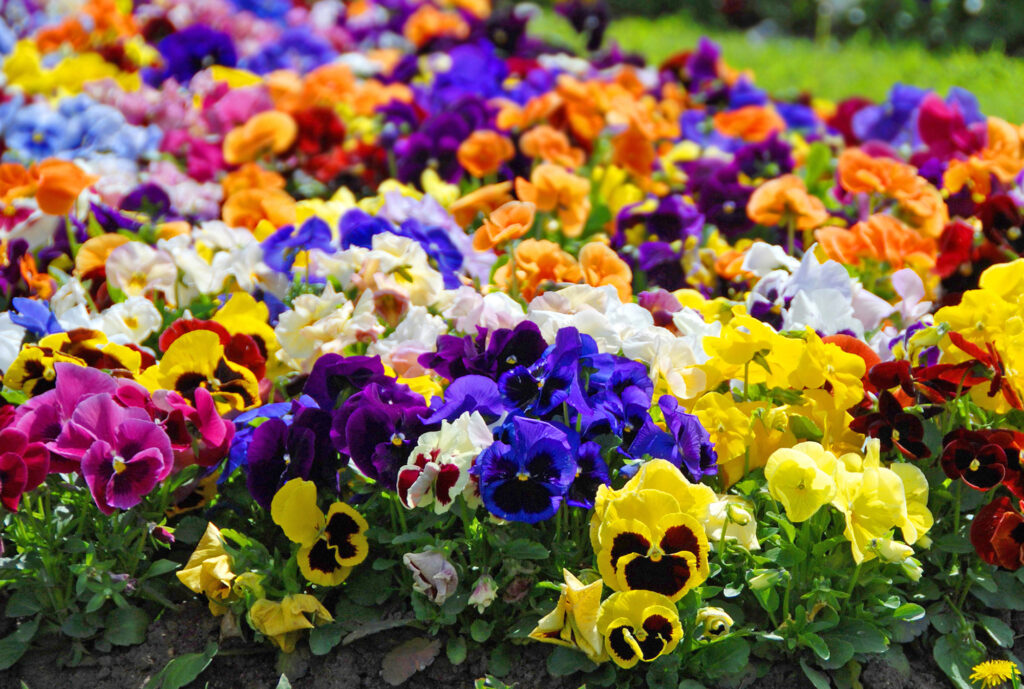
Pansies in a flower garden
Marigolds: Marigolds, with their warm and vibrant colors, are a popular choice for fall flower beds and pots.
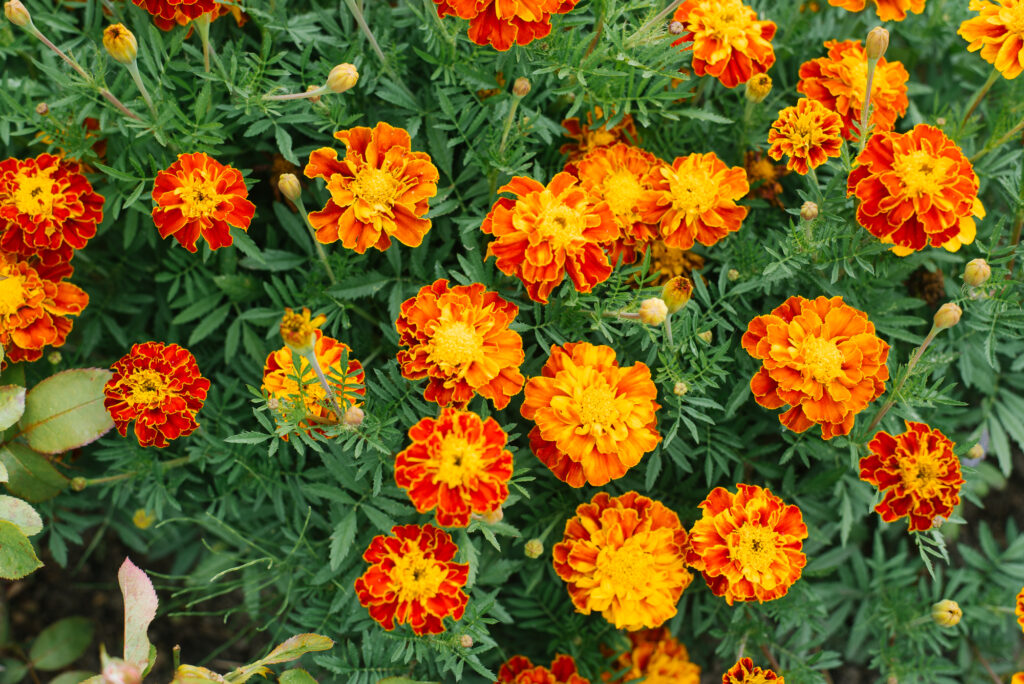
Flower background of marigolds in the garden in the fall
Helenium (Sneezeweed): Helenium produces striking, daisy-like flowers in shades of red, orange, and yellow, which are reminiscent of autumn hues.
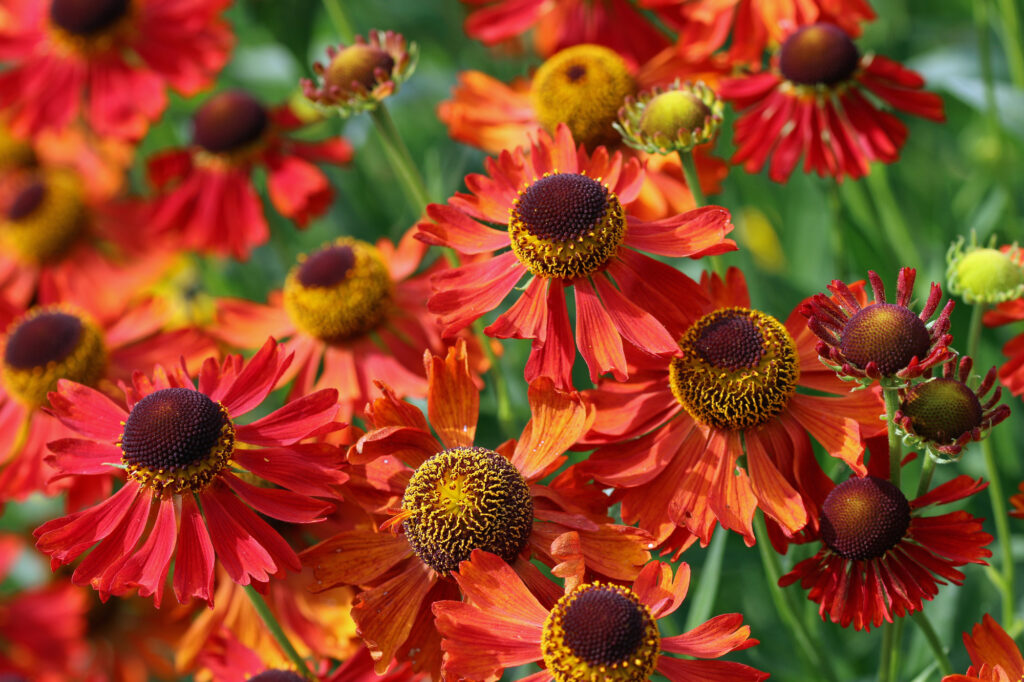
Orange sneezeweed, flowers in close-up with a background of blurred leaves.
Sedum: Sedums are succulent plants that bloom in late summer and early fall with clusters of tiny, star-shaped flowers. They come in various colors and are great for ground cover.
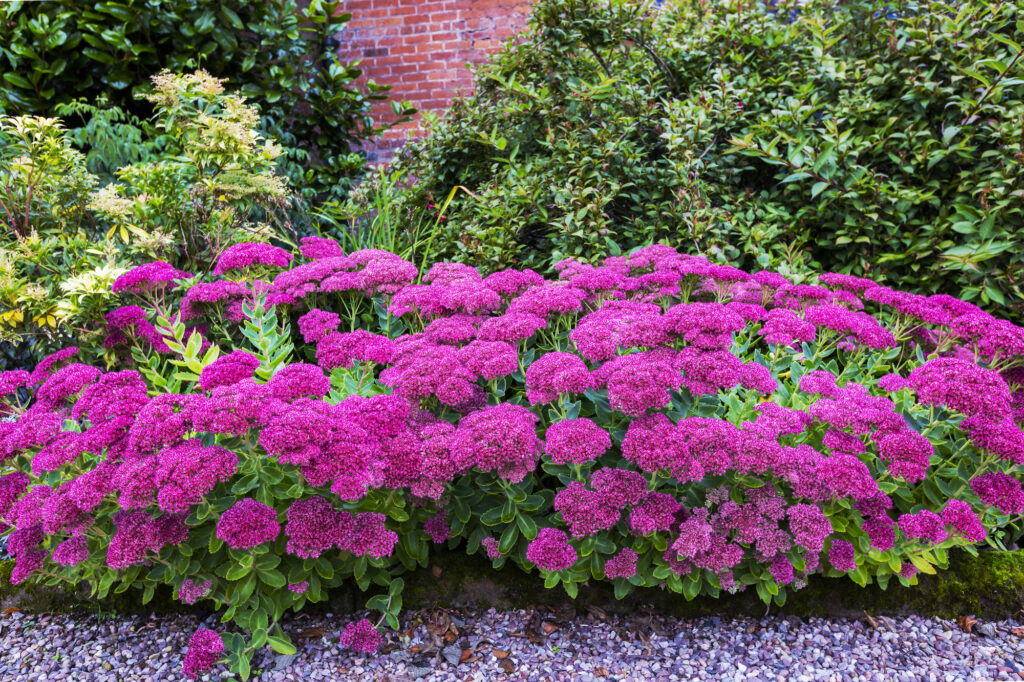
Russian Sage: While not technically a flower, Russian sage’s silvery foliage and lavender-blue flowers can add a unique touch to your fall landscape.
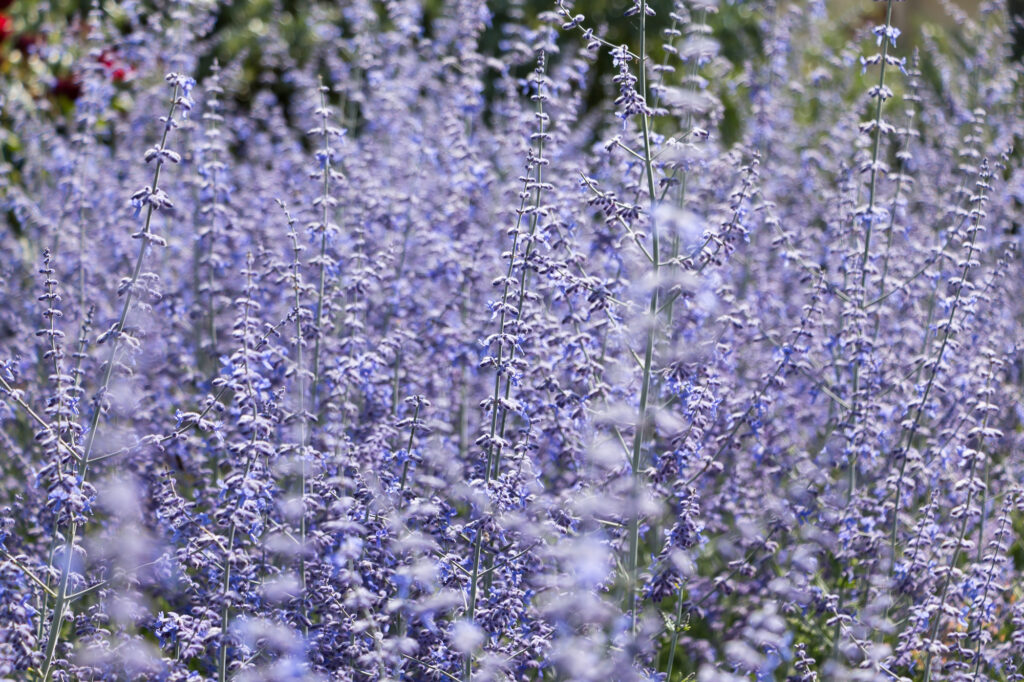
Russian sage flower close-up in the countryside
Japanese Anemone: Japanese anemones produce charming, single or double flowers in shades of pink or white and are perfect for late-season interest.
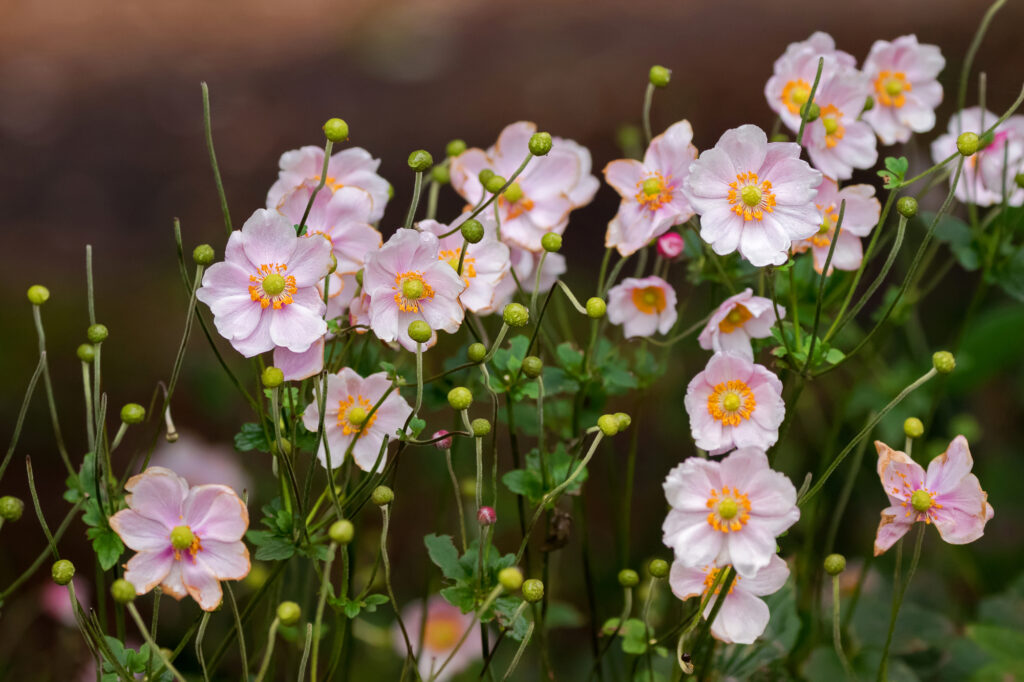
Closeup of Japanese Anemone (Windflower) flowers in pink with yellow stamens in the garden (Anemone hupehensis vel japonica)
Goldenrod: Goldenrod’s bright yellow, feathery blooms are a favorite in the fall and attract pollinators.
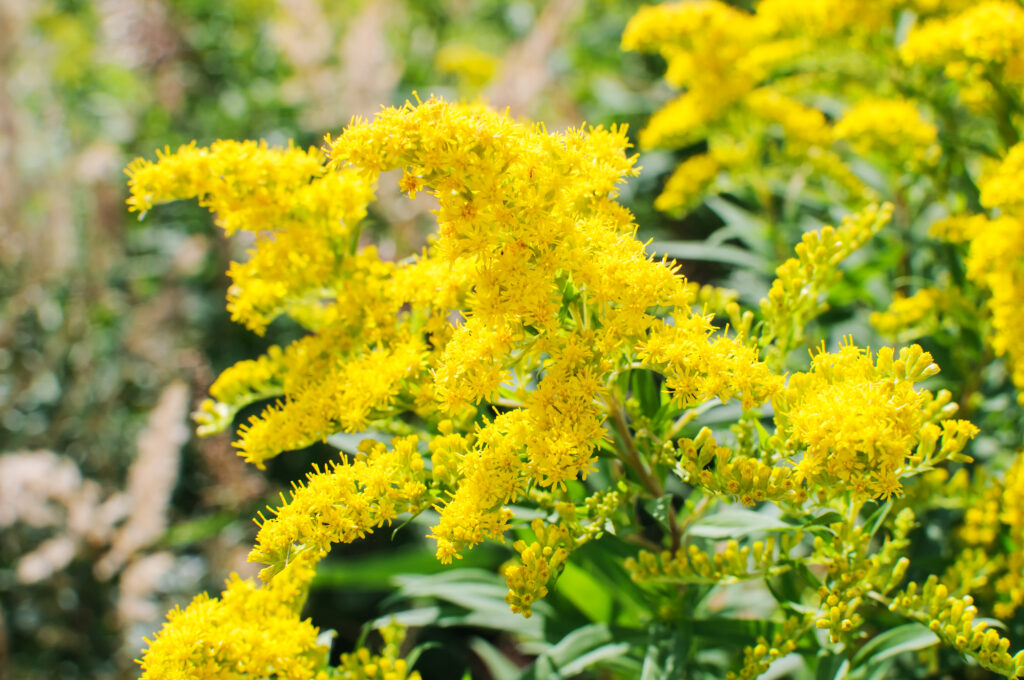
When planning your fall garden, consider your local climate and soil conditions to choose the best plants for your area. Also, think about the color scheme and aesthetic you want to achieve to create a harmonious and inviting fall landscape.
Understanding the Benefits of Fall Bulbs
We often associate flowering bulbs with springtime; however, you will need to think ahead and plant your spring flowering bulbs in the fall. By planning ahead now, you set yourself up for success later: come late winter or early spring, your garden will be full of blooming surprises.
To get maximum impact from these plants next year, consider their mature size and how they will look among other plants in your garden. It’s a bit like putting together a puzzle—you’ll want to place larger bulbs towards the back of your beds or borders with smaller ones up front.
The Advantages of Fall Planting
Autumn isn’t just about vibrant leaves and pumpkin spice; it’s a golden opportunity for gardeners too. Let’s unearth some reasons why fall planting makes perfect sense.
Cooler air, Happier Plants (and Gardeners.)
Firstly, the cooler air in fall is easier on both plants and gardeners. Think of it as nature’s air conditioning. It reduces plant stress caused by summer heat while also making your gardening experience more comfortable – no more sweating under the hot sun.
Ripe Time for Root Growth
Secondly, though autumn days may be chillier, remember that soil remains warm enough to encourage root growth. This allows new plants to establish themselves before winter arrives.
Bulbs Need a Head Start
If you dream of colorful blooms brightening up your spring flower arrangements or wish to have cut flowers with long-lasting appeal ready at home early next year, here’s a pro tip: Spring-blooming bulbs need their beauty sleep in the ground during winter.
A World of Benefits Waiting Underground
To wake up fresh as daisies come springtime they must be planted in the late summer or early fall. So don’t wait until bloom time rolls around again; give these sleeping beauties their bed now.
Preparing Your Garden for Fall Planting
Fall planting is a great time to get your garden ready for the following growing season. But before you get excited about those vibrant fall flowers, there’s work to be done. To ensure success, plan ahead for each plant’s mature size and provide ample space for it to flourish.
To begin with, consider the mature size of each plant. Spacing out small plants according to their full-grown dimensions will let them spread out and thrive without crowding each other. Wide-range species need more space compared to compact ground cover varieties.
The Magic Beneath The Surface
Next up, it’s time we pay attention to what lies beneath our feet: soil quality. For healthy growth, most fall plants require well-draining soil rich in organic matter. If you’re unsure about your soil type or its nutrient content, getting it tested would be beneficial.
Picking The Right Spot
Last, but not least, think carefully about where exactly within your garden beds these new additions should go; sunlight exposure plays a vital role in their health and blooming capacity. So do some research first because sun-loving flowers may struggle if they’re planted somewhere shady.
I trust this has given you a sound basis for setting up your own gardens to be successful when planting in the fall.
Essential Care Tips for Fall Flowers
Fall flowers, like any other garden gems, need a little TLC to shine. But don’t worry. With our firsthand experience at Evolving Landscapes and some helpful gardening tips we’ve gathered along the way, your fall blooms will be thriving in no time.
The first step is understanding their water needs. Contrary to popular belief, autumn doesn’t mean plants require less hydration. If it’s not raining at least an inch per week – yes, you might want to invest in a rain gauge – deep watering becomes essential.
Gardening Tip: Deep Watering
Deep watering means soaking the soil about 8 inches deep. Healthy plants grow deep roots, some even up to two feet long to get the most nutrients and water. When you water deeply, it encourages roots to grow deeper, making plants stronger against dry spells and tough winters.
Frost Protection with Mulch
Apart from hydrating well-drained soil adequately, let’s pay attention also to frost protection during late fall or early winter months when temperatures start dropping dramatically. A simple yet effective solution is using mulch as a protective layer around your plants which can help them survive the chilling weather by preventing frost heaving – sudden upthrusts of soil caused by freezing temperatures beneath the surface.
This practice keeps root systems warm and prevents cycles of freeze-thaw which can cause plant displacement (or ‘heaving’) out of ground cover- leaving exposed roots vulnerable.
Cornell University’s Gardening Guide recommends organic mulches such as straw or leaves since they also improve soil structure while breaking down over time.
So, remember these simple care tips and give your fall flowers the best chance to show off their vibrant colors.
Choosing the Right Fall Flowers for Your Growing Conditions
If you’re hoping to cultivate a vibrant fall garden, it’s crucial to choose flowers that suit your unique growing conditions. This means paying attention to factors like soil type and light exposure.
Planting in Partial Shade
Fall-blooming flowers like Japanese Anemones thrive in partial shade, offering delicate white or pink blooms even as temperatures drop. These plants are also quite cold-hardy and can survive winter frosts with ease.
Some varieties of Asters can tolerate partial shade and are another excellent choice for partially shaded areas. Their daisy-like blooms range from bright reds and pinks to cool blues and purples, providing a pop of color late into the season.
Selecting Drought-Tolerant Species
If you live in an area prone to dry spells or simply want more water-wise gardens, drought-tolerant species are key. Sedum ‘Autumn Joy’ is one such plant known for its ability not just to survive but thrive under these conditions thanks to their well-drained soil preference.
The Russian Sage is another champion of arid environments due to its high drought tolerance. It’s worth noting however that while this lovely blue flowered perennial loves sun-soaked spots; it too appreciates well-draining soil so be sure those beds don’t become soggy.
No matter where you live – whether it’s bathed in sunlight or tucked away beneath tree cover – there exists perfect fall planting options ready to transform any yard into an autumnal paradise. So let us help get started on crafting yours today at Evolving Landscapes.
Maximizing Your Garden’s Potential with Fall Planting
Fall planting can work wonders in enhancing your garden’s potential. It gives a head start to many plants, especially spring-blooming bulbs, preparing them for a vibrant show when warmer days return.
A common misconception is that gardening wraps up as the summer heat fades. But let me tell you, some of the most rewarding moments come from fall gardens. The cooler weather makes it an ideal time for both plants and gardeners.
Did you know? Cooler air during fall eases plant stress while still warm soil promotes root growth – it’s science. This unique combo allows your new additions to establish strong roots before winter sets in, providing them with the strength they need to flourish come springtime.
And we can’t forget about those spring-blooming bulbs. Tulips and hyacinths need their beauty sleep underground throughout late winter and early spring to wake up refreshed for their bloom season. When planted in early autumn, these pretty flowers get enough time to settle down before they have to put on their colorful blooms. The rule of thumb here? Get those beauties into well-draining soil by late September or October depending on your growing zone.
If maximizing color is what you’re after (and who isn’t?), consider adding fall-blooming flowers like mums or asters into the mix too. They provide watercolor-like hues just when other garden plants are calling it quits.
To make sure this strategy pays off – remember timing matters; don’t wait until hard frost hits. Make use of this golden period post-summer heat and before the ground freezes. Your spring garden will thank you.
Creating Eye-Catching Arrangements with Fall Flowers
The magic of fall is not just about the changing leaves. It’s also an opportunity to showcase the vibrant colors and textures of your garden in beautiful flower arrangements. Let me share our experiences on how you can use cut flowers from your autumn garden to create eye-catching displays.
You might be wondering, what makes a good arrangement? Well, there are no definite guidelines but here are some pointers that have assisted us through the years. Start by selecting long-lasting blooms like dahlias or zinnias for their bold hues and impressive staying power in vases. Next, add depth with interesting foliage such as colorful coleus or dusty miller leaves.
Mixing different types of flowers gives variety to your arrangement while maintaining harmony among them is equally important. You can achieve this by sticking within a color palette – perhaps bright yellows and oranges reflecting the surrounding fall landscape.
Remember, creating stunning flower arrangements isn’t just about making something pretty – it’s a way to express yourself through nature’s beauty.
Where to Find Quality Plants for Fall Planting
If you’re wondering where to find quality plants suitable for fall planting, both locally and online, we’ve got you covered. There are a variety of places that offer an excellent selection of fall flowers.
Home Depot, for example, has garden centers in most areas and offers a wide range of plant options suited for autumn. They even have knowledgeable staff on hand who can help answer any questions about what might work best in your specific growing conditions.
In addition to physical stores like Home Depot, there are numerous reputable online nurseries. Websites such as Burpee or American Meadows provide high-quality seeds and plants directly to your doorstep. These sites often give detailed information about each plant’s needs regarding sunlight exposure, soil type, and watering requirements – all the crucial details needed when planning your perfect fall garden.
You could also consider local farmers’ markets or community gardening events where native species adapted to local climates may be available. Such plants not only add charm but can also support local biodiversity by providing food sources and habitats for pollinators.
Finding the right place is just the first step towards creating a vibrant fall garden. Doing some research and preparation can help you pick the perfect plants to make your outdoor space look great during autumn.
FAQs in Relation to Best Flowers for Fall Planting
What flowers should be planted in the fall?
Fall is perfect for planting bulbs like tulips, hyacinths, and daffodils. Autumn crocus and grape hyacinth also thrive when planted during this season.
Can I plant flowers in September?
Absolutely. Flowers such as snapdragons, petunias or marigolds do well if you get them into the ground early in September.
How late can you plant flowers in the fall?
You can still plant perennials up until your area’s first hard frost date. For spring-blooming bulbs though, make sure they’re in by mid-fall so they have time to establish roots before winter hits.
Conclusion
Unlocking the beauty of fall starts with choosing the best flowers for fall planting. It’s all about understanding their unique growth habits and care needs.
Chrysanthemums and Zinnia, for instance, are standout choices that can bring vibrancy to your garden during those cooler months.
Bulbs like tulips and hyacinths need well-drained soil and bloom best in full sun. And remember, it’s crucial to plant these spring-blooming bulbs in early autumn!
Caring for your new blooms? Well-drained soil, watering deeply if there’s less than an inch of rain per week, and protecting them from frost heaving with a layer of mulch will keep them thriving throughout winter.
Drought-tolerant species or plants suitable for partial shade could be perfect depending on your growing conditions. But regardless of what you choose – preparation is key! So get out there, and start digging up some dirt – make sure every flower planted this fall brings joy next spring!
Read More Landscaping Tips:
Is It Worth Hiring A Landscape Designer?
How Much Does Landscaping Improve Home Value?

